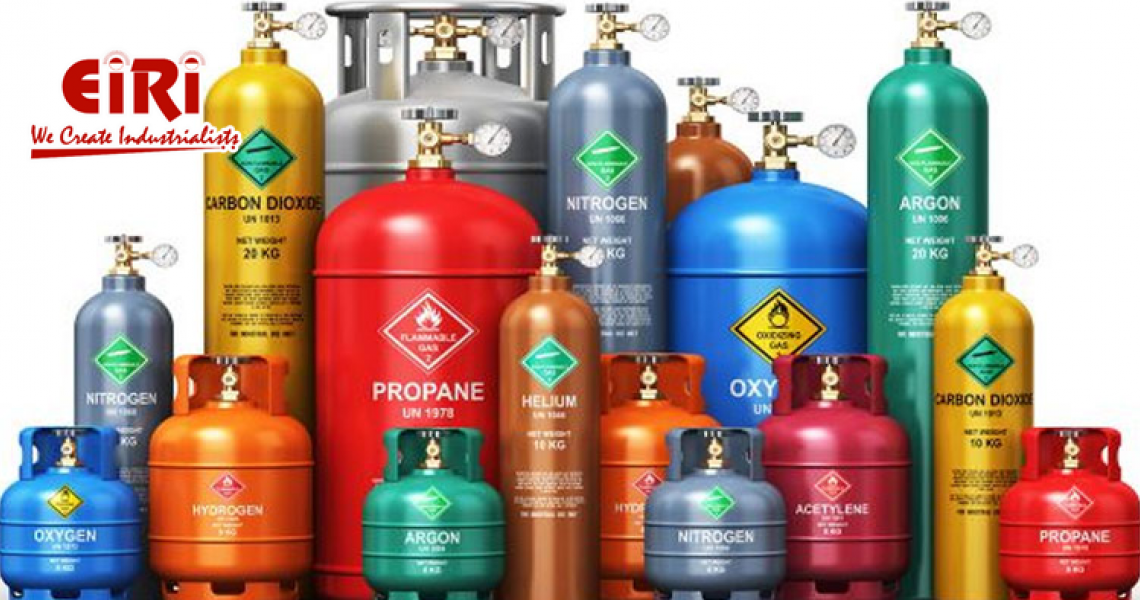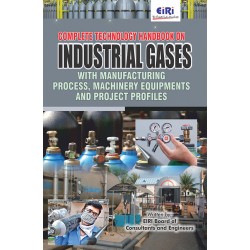Industrial Gas Manufacturing - Industry Overview, Market Growth and Future Demand

In the expansive landscape of manufacturing, industrial gases play a pivotal role, serving as essential components in a multitude of industries and processes. This comprehensive article delves into the intricacies of industrial gas manufacturing, exploring the methods, applications, and the pivotal role these gases play in diverse sectors.
The global market for industrial gases achieved a valuation of USD 96.50 billion in 2022 and is anticipated to reach USD 147.28 billion by 2028, demonstrating a steady Compound Annual Growth Rate (CAGR) of 7.30%. The widespread application of industrial gases across diverse industries propels this growth trend, with increasing demand foreseen in the upcoming years.
This surge is attributed to factors like the rise in industrialization, urbanization, and population expansion. Industrial gases play integral roles in manufacturing, processing, and analytical processes. These gases, categorized as either pure or mixed, are typically produced on a large scale and supplied in compressed or liquid forms. Notable industrial gases encompass oxygen, carbon dioxide, nitrogen, argon, helium, acetylene, and hydrogen. To meet evolving customer needs, companies are actively investing in research and development, aiming to introduce innovative products and technologies. This strategic focus is poised to fuel the industrial gas market by providing distinct and forward-thinking solutions to a spectrum of industries.
Here's a list of different industrial gases along with their applications:
Oxygen (O2):
Applications:
- Metallurgy: Used in metal cutting, welding, and smelting.
- Medical: Vital for respiratory therapies and life support.
- Chemical Processing: Facilitates combustion processes.
- Water Treatment: Supports oxidation processes.
Nitrogen (N2):
Applications:
- Food and Beverage: Used in packaging to extend shelf life.
- Metallurgy: Prevents oxidation during heat treatment.
- Electronics: Creates inert atmospheres in semiconductor manufacturing.
- Medical: Used in cryopreservation and as a carrier gas.
Argon (Ar):
Applications:
- Welding: Shields the welding area from atmospheric gases.
- Electronics: Used in the production of semiconductors.
- Metallurgy: Inert gas for processes like heat treatment.
- Scientific Research: Used in laboratories.
Hydrogen (H2):
Applications:
- Chemical Manufacturing: Used in the production of ammonia and methanol.
- Electronics: Used in the reduction of metal oxides.
- Fuel Cells: A clean energy source.
- Food Processing: Hydrogenation of oils.
Carbon Dioxide (CO2):
Applications:
- Food and Beverage: Used in carbonation of beverages.
- Medical: Used in respiratory therapies.
- Welding: Used as a shielding gas.
- Greenhouse Agriculture: Enhances plant growth.
Helium (He):
Applications:
- Cryogenics: Used to cool superconducting magnets.
- Balloons: Provides lift in balloons.
- Welding: Used as a shielding gas.
- Medical Imaging: Used in MRI machines.
Acetylene (C2H2):
Applications:
- Welding and Cutting: Used as a fuel for oxy-acetylene torches.
- Chemical Synthesis: Used in the production of various chemicals.
- Metal Cutting: Used in flame cutting processes.
Methane (CH4):
Applications:
- Energy Production: Used as a natural gas for heating and electricity.
- Chemical Processing: Used in the production of chemicals.
- Metal Industry: Used in metal annealing processes.
Krypton (Kr):
Applications:
- Lighting: Used in certain types of high-intensity discharge lamps.
- Laser Technology: Used in certain laser applications.
- Gas Filled Windows: Used in energy-efficient windows.
Xenon (Xe):
Applications:
- Lighting: Used in xenon arc lamps.
- Medical Imaging: Used in certain types of medical imaging.
- Laser Technology: Used in certain laser applications.
These are just a few examples, and there are many more industrial gases with diverse applications in various industries. The choice of gas depends on factors such as the specific industrial process, required purity, and safety considerations.
Overview of Industrial Gas Manufacturing:
The Elemental Essence:
Industrial gases are elemental substances in gaseous form that find applications across a spectrum of industries, ranging from manufacturing and healthcare to electronics and metallurgy. These gases are often produced in large quantities through specialized manufacturing processes to meet the stringent purity and quality requirements demanded by various applications.
Methods of Industrial Gas Production:
1. Cryogenic Distillation:
A prevalent method for producing industrial gases is cryogenic distillation. This process involves cooling air or other feed gases to extremely low temperatures, causing them to liquefy. The different components of the liquefied gas can then be separated through distillation, resulting in high-purity industrial gases like oxygen, nitrogen, and argon.
2. Pressure Swing Adsorption (PSA):
Pressure Swing Adsorption is another common technique used for gas separation. In this method, gases are passed through adsorbent materials under varying pressure conditions. The adsorbent selectively captures certain gases while allowing others to pass through, enabling the production of gases such as hydrogen and nitrogen.
3. Chemical Reactions:
Certain industrial gases are generated through chemical reactions. For example, the production of ammonia involves reacting nitrogen and hydrogen under specific conditions. This method allows for the synthesis of gases with specific properties required for various applications.
Applications Across Industries:
1. Manufacturing and Metallurgy:
Industrial gases are indispensable in manufacturing and metallurgical processes. Oxygen is a crucial component for combustion in metal cutting and welding, while nitrogen finds use in preventing oxidation during heat treatment processes.
2. Healthcare:
In the healthcare sector, industrial gases such as oxygen and nitrous oxide are vital for respiratory therapies and anesthesia. These gases must meet stringent purity standards to ensure patient safety.
3. Electronics and Semiconductor Manufacturing:
Ultra-high purity gases, including nitrogen and argon, are critical in the electronics and semiconductor industry. They create controlled atmospheres for manufacturing and prevent contamination in the production of microelectronics.
4. Food and Beverage:
Industrial gases play a role in the food and beverage industry, where they are used for modified atmosphere packaging, beverage carbonation, and freezing applications.
5. Environmental Protection:
Certain industrial gases contribute to environmental protection efforts. For example, hydrogen is utilized in fuel cells as a clean energy source, while carbon dioxide is used in processes such as wastewater treatment.
Technological Advancements:
As technology advances, so does the field of industrial gas manufacturing. Innovations include more energy-efficient production processes, advanced purification techniques, and the development of specialty gases tailored to specific industrial requirements.
Future Trends and Sustainability:
The future of industrial gas manufacturing is poised to embrace sustainability. The industry is exploring methods to reduce energy consumption, increase the efficiency of gas production, and minimize environmental impact. Additionally, the demand for green hydrogen as a clean energy source is driving research and development in this sector.
In Conclusion:
Industrial gas manufacturing stands as a linchpin in modern industrial processes, contributing to the functionality and progress of diverse sectors. From the intricate methods of production to the wide-ranging applications, the dynamics of industrial gas manufacturing are complex yet integral to the functioning of our technologically advanced world. As technological innovations continue to shape the industry, the future promises a more sustainable and efficient approach to meet the ever-evolving demands of global manufacturing and technological advancement.












